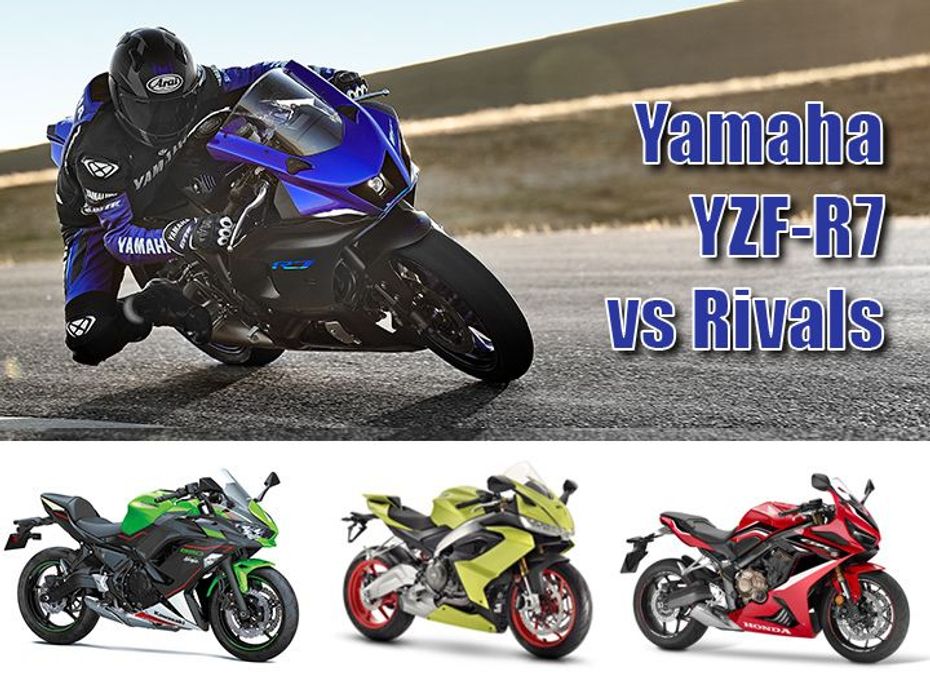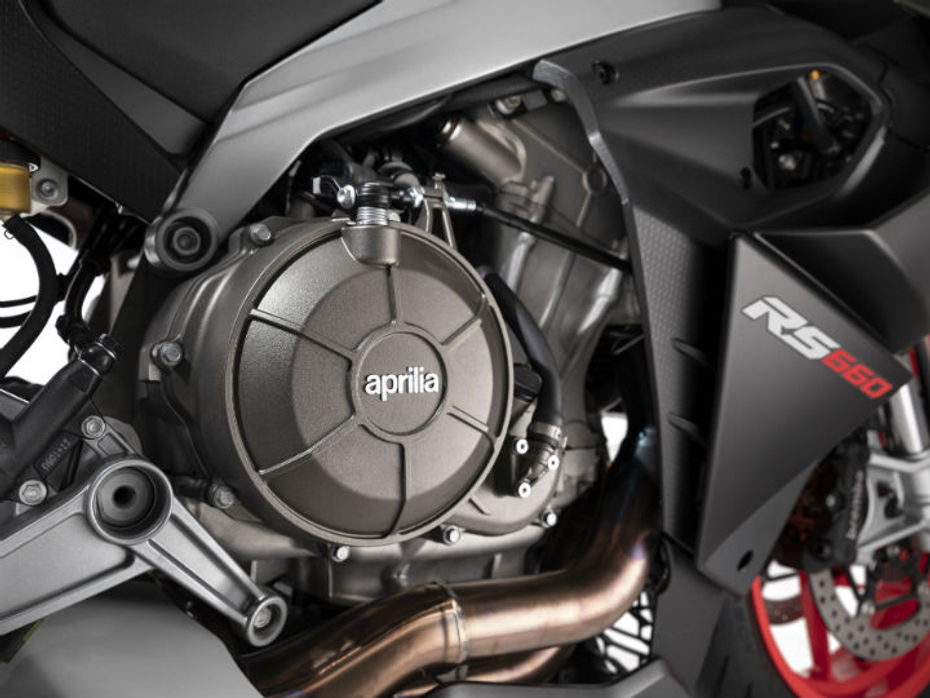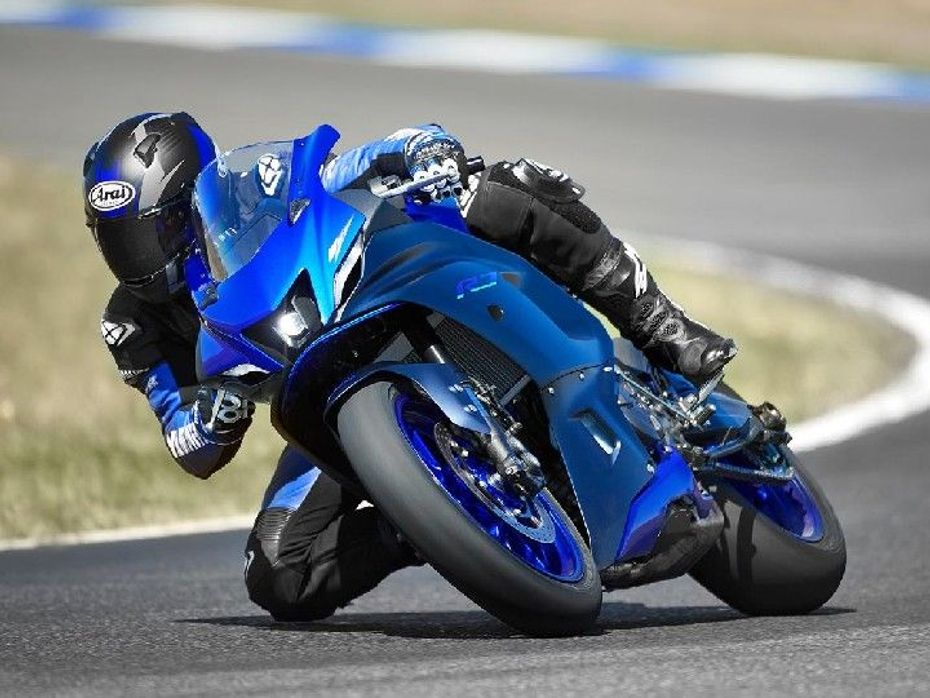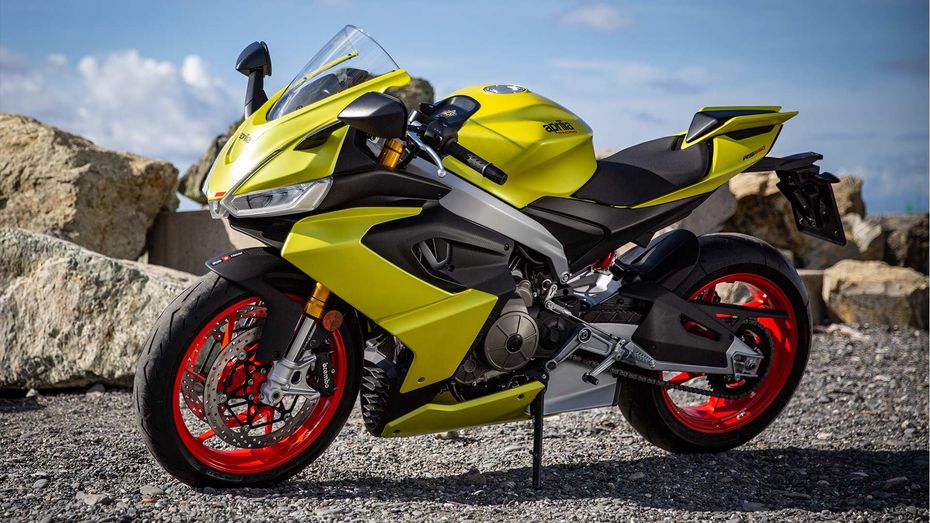
Yamaha Launches The Minion-faced Vinoora In Vietnam, No Banana Yellow...
- Jun 17, 2021
- Views : 18412


“Every new beginning comes from some other beginning’s end.” The death of the 600cc supersports, like the Yamaha R6, the Honda CBR600RR, and the Kawasaki Ninja ZX-6R, gave rise to a whole new segment of mid-displacement sport bikes that are more versatile. Kawasaki has enjoyed much success with the Ninja 650 and so did Honda with the CBR650R. However, the Aprilia RS660 has made a lot of people sit up and take notice of how the future of sport bikes would look like. Following suit, Yamaha too has launched the YZF-R7, the Japanese bikemaker’s contender in this class. How does it fare in the segment?

Engine
|
Specifications |
Yamaha YZF-R7 |
Kawasaki Ninja 650 |
Aprilia RS660 |
Honda CBR650R |
|
Engine |
689cc, parallel-twin, liquid-cooled, 8-valve engine |
649cc, parallel-twin, liquid-cooled, 8-valve engine |
659cc, parallel-twin, liquid-cooled, 8-valve engine |
648.72cc, inline-four, 16-valve engine |
|
Power |
73.4PS @ 8750rpm |
68PS @ 8000rpm |
100PS @ 10,500rpm |
87PS @ 12,000rpm |
|
Torque |
67Nm @ 6500rpm |
64Nm @ 6700rpm |
67Nm @ 8500rpm |
57.5Nm @ 8500rpm |
|
Gearbox |
6-speed |
6-speed |
6-speed |
6-speed |
Aprilia has truly built a spectacular machine. Given that it is derived from the RSV4’s 1100cc V4 mill, this 659cc twin is a high-strung unit with a 270-degree crankshaft, giving it a punchy V-twin-esque engine characteristics. The Yamaha CP2 engine too has a 270-degree crank and is known to be quite torquey and revv happy. Its performance is unlikely to be as explosive as the RS660’s but amongst its other peers, the Yamaha stands tall.
As far as aural pleasure is concerned, the CBR650R belts out a signature inline-four tune from its short side-slung exhaust. In comparison, the other three sound gruff and not as hair-raising.

Underpinnings
|
Specifications |
Yamaha YZF-R7 |
Kawasaki Ninja 650 |
Aprilia RS660 |
Honda CBR650R |
|
Frame |
Tubular steel diamond with aluminium centre brace |
Tubular steel trellis |
Twin spar aluminum |
Tubular steel diamond |
|
Front suspension |
41mm KYB USD fork, compression and rebound adjustable |
41mm conventional telescopic fork |
41mm KYB USD fork, preload and rebound adjustable |
41mm Showa BP-SFF USD fork |
|
Rear suspension |
Linked monoshock, preload and rebound adjustable |
Preload-adjustable link-type monoshock |
Monoshock, preload and rebound adjustable |
Monoshock, preload-adjustable |
|
Front brake |
298mm discs, four-piston radial calipers |
300mm discs, twin-piston sliding calipers |
320mm discs, Brembo M4.32 monobloc calipers |
310mm discs, Nissin four-piston radial calipers |
|
Rear brake |
245mm disc, single-piston caliper |
220mm disc, single-piston caliper |
220mm disc, Brembo twin-piston caliper |
240mm disc, Nissin single-piston caliper |
|
Front tyre |
120/70 - R17 |
120/70 - R17 |
120/70 - R17 |
120/70 - R17 |
|
Rear tyre |
180/55 - R17 |
160/60 - R17 |
180/55 - R17 |
180/55 - R17 |
|
Tyre Make |
Bridgestone Battlax Hypersport S22 |
Dunlop Sportmax Roadsport 2 |
Pirelli Diablo Rosso Corsa 2 |
Dunlop Sportmax D214 |
Once again, it is quite neck and neck between the RS660 and the R7. Both motorcycles get adjustable front suspension, with the R7 offering a bit more sophistication. Conversely, even though both bikes have radial front calipers, the RS660 uses higher-spec Brembo monoblocs as well as a Brembo radial master cylinder.
The Ninja feels quite simple and barebones in this company. Minimal adjustability, no fancy USD fork, and no radial brake calipers. Even the tyres aren’t as grippy as the other two bikes but the Roadsport 2s are certainly better than the Honda’s D214s.

Dimensions
|
Specifications |
Yamaha YZF-R7 |
Kawasaki Ninja 650 |
Aprilia RS660 |
Honda CBR650R |
|
Wheelbase |
1,395mm |
1,410mm |
1,370mm |
1,450mm |
|
Ground clearance |
135mm |
130mm |
NA |
132mm |
|
Fuel tank capacity |
13-litres |
15-litres |
15-litres |
15.4-litres |
|
Seat height |
835mm |
790mm |
820mm |
810mm |
|
Kerb weight |
188kg |
196kg |
183kg |
211kg |
One must really commend Aprilia on packaging the RS660 as tightly as possible. It is lighter than the R7 despite being able to carry more fuel on board and having a comprehensive set of electronic rider aids. The seat height is relatively accessible, unlike the R7 which is frankly a bit too high for the segment.
The Ninja’s accommodating dimensions make for a neat starter big bike. It is a bit plumpy and could certainly do with a little weight loss so as to improve its handling dynamics.
Packing two extra cylinders means more parts and hence more weight. In fact, the CBR650R is a whopping 28kg heavier than the RS660.

Price & Verdict
|
Yamaha YZF-R7 |
Kawasaki Ninja 650 |
Aprilia RS660 |
Honda CBR650R |
|
Rs 10 lakh (estd) |
Rs 6.54 lakh |
Rs 13.39 lakh |
Rs 8.89 lakh |
(all prices ex-showroom India)
The Kawasaki Ninja 650 might be the least powerful and also the simplest of the lot but that’s for a good reason: low cost. There’s simply no beating the Kawasaki in this regard as it has been one of the highest selling mid-displacement bikes in the country. We are waiting for Aprilia to officially launch the RS660 in India but thanks to our dealer friends, we were able to know that the Italian sport bike arrives at an eye-watering Rs 13.39 lakh. Even the price tag of the Honda CBR650R feels a bit too steep but Honda tries to make up for it with low maintenance and spare costs.
Hence, if Yamaha were to bring the R7 to India, it would have to be via the CKD route and get its pricing strategy bang-on. Given its past record, we estimate that the Japanese manufacturer might price the supersport at around Rs 10 lakh. However, if it does want to step up its big bike business in the country, Rs 9 lakh would be suitable for it.

Yamaha Launches The Minion-faced Vinoora In Vietnam, No Banana Yellow...

Will Yamaha Really Bring The Tracer To India?

Get Ready, Yamaha Confirms The FZ-X’s Arrival

Gear Up For Tomorrow’s Yamaha FZ-X Launch

5 Most Important Things That Happened In The 2-wheeler World This Week

Yamaha YZF R7 Spied On Madras Race Track Ahead Of Launch

Here’s How Yamaha Could Price Its Big Bikes In India

Yamaha Is Gearing Up For Some Serious Launches in 2023

The Yamaha YZF-R9’s Existence Is Confirmed

The 2023 Yamaha YZF-R3 And R7 Come Painted In Interesting New Colours
India's largest automotive community